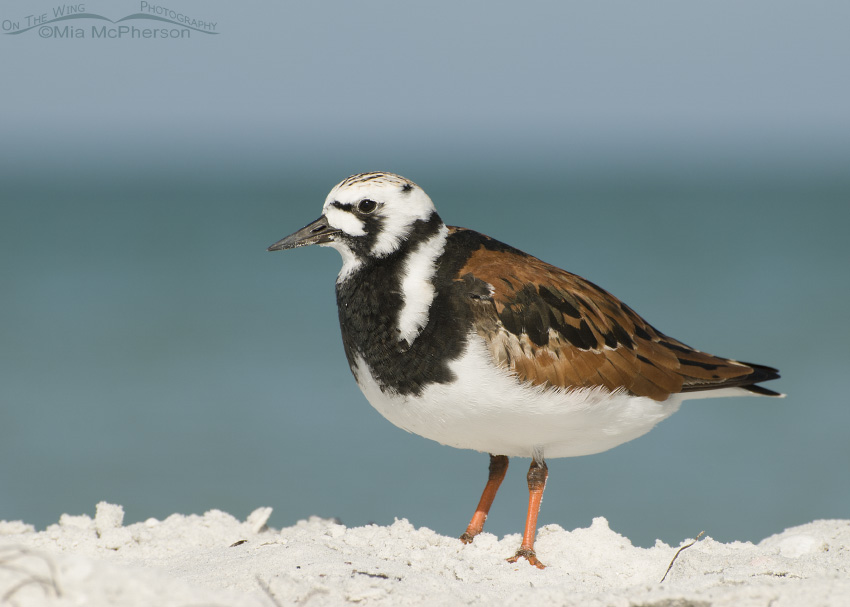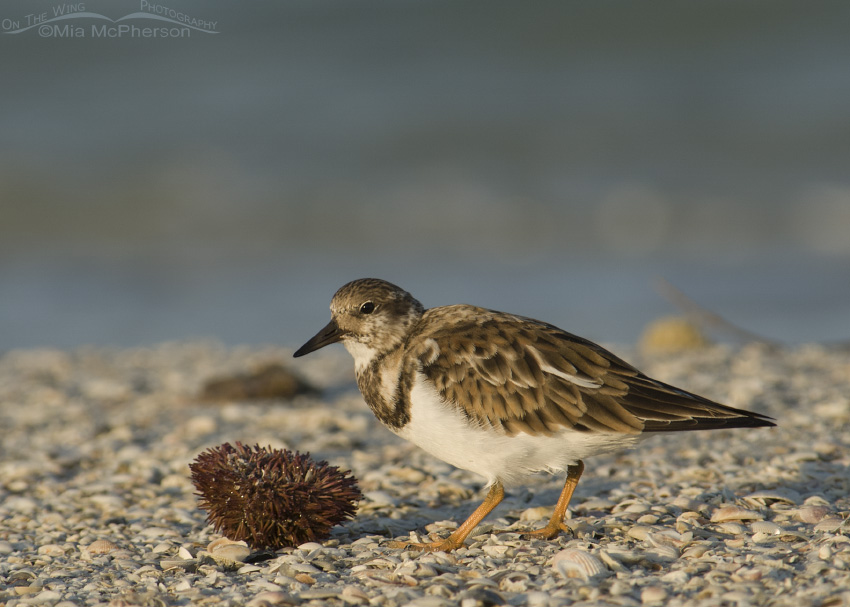 Ruddy Turnstone side view – Nikon D200, handheld, f9, 1/640, ISO 160, Nikkor 70-300mm VR at 230mm, natural light
Ruddy Turnstone side view – Nikon D200, handheld, f9, 1/640, ISO 160, Nikkor 70-300mm VR at 230mm, natural light
Beginning in March of 2011 the American Birding Association (ABA) has selected a Bird of the Year starting with the American Kestrel in 2011. Since that time the ABA Bird of the Year has included the Evening Grosbeak (2012), Common Nighthawk (2013), Rufous Hummingbird (2014), Green Heron (2015) and the Chestnut-collared Longspur (2016).
A few days ago the ABA announced the 2017 Bird of the Year as the Ruddy Turnstone and I couldn’t be any happier because shorebirds were my “spark” birds that propelled me into the world of bird photography. So to see a shorebird selected as the Bird of the Year excited me.
 Sea Urchin with Ruddy Turnstone – Nikon D200, handheld, f6.3, 1/500, ISO 250, +0.3 EV, Nikkor 80-400mm VR at 400mm, natural light
Sea Urchin with Ruddy Turnstone – Nikon D200, handheld, f6.3, 1/500, ISO 250, +0.3 EV, Nikkor 80-400mm VR at 400mm, natural light
Some Ruddy Turnstone information:
- Ruddy Turnstones are medium sized, stocky shorebirds with short dark bills, short orange legs, black and white facial patterns, white bellies and dark backs. In breeding plumage their backs and sides turn a bright reddish brown and the facial patterns become more distinct. In nonbreeding plumage they are duller but still colorful.
- Turnstones get their name because while foraging they often turn stones (or shells, seaweed on wrack lines) over with their bills to get at their prey.
- Ruddy Turnstones eat insects like midges, small mollusks, crustaceans, horseshoe crab eggs, bird eggs when available, some vegetation during the breeding season, garbage and carrion that has washed on shore.
- Ruddy Turnstones are migratory. They breed in arctic coastal tundra habitats, particularly rocky coasts.
- Ruddy Turnstones lay 2 to 4 eggs which hatch in 21 to 23 days. Both sexes incubate and they are monogamous.
- The oldest Ruddy Turnstone recorded was nearly 15 years of age.
Ruddy Turnstones can be found in North, Central and South America, Europe, Russia, Africa, China, Japan, New Zealand, Australia and many of the Pacific Islands. Birders and bird photographers around the world can enjoy seeing and photographing this flashy shorebird.
Because Ruddy Turnstones breed in arctic coastal tundra habitats there is concern about them being affected by climate change and rising sea levels.
Although Ruddy Turnstones migrate through Utah I have not been able to get as close to them as I did when I lived in Florida where they were so brazen they would walk up close enough to me that at times that I could not focus on them.
I was always excited to see Ruddy Turnstones on the beaches of Florida’s Gulf Coast and now I am excited that they have been chosen as the ABA Bird of the Year! Happy dance!
Life is good.
Mia
Have a listen to Ruddy Turnstones on their breeding grounds in Norway.
Click here to see more of my Ruddy Turnstone photos plus facts and information about this species.


Thank you all for your comments, I am glad this colorful shorebird was chosen for the ABA Bird of the Year!
The Ruddy Turnstone. What a fascinating bird and so widespread, yet I had never heard of it before your post. Very interesting info and your photos are, as always, terrific. I sure have a lot to learn. Thanks Mia.
Very striking bird. Thanks for sharing . Be safe and God Bless
Not only are they very pretty birds but their names are fun to say…
Thanks for the information; the Ruddy Turnstone is certainly a worthy bird!
Beautiful images, Mia. Interesting commentary.